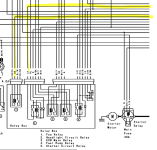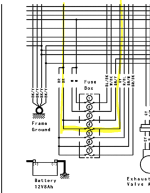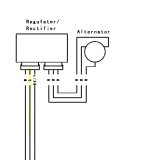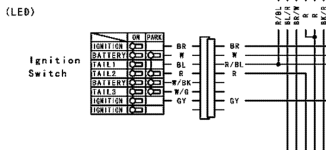I have a 2009 ZX6R track bike that I'm converted back for street use. Still has OEM wiring harness that's untouched from what I can tell.
Everything works fine except no power to both sockets of high and low beam. I tested with a multimeter with the bike/engine running. I took the cluster off, so can't tell if the high beam indicator comes on. All other lights such as front and rear signals, daytime running, and brake lights work just fine. Fuses are fine. The aftermarket LED headlight also works without issue if I power them from signal or daytime running sockets. From what I gather online and in the manual, it could be the rectifier or relay, but this is where my knowledge and abilities end. I'm confused on how to check the relay as per the manual (but I'm also doubting that's the issue).


What do I connect exactly together with the multimeter and the battery to what configuration? I'm new to electrical stuff looking for some more specific diagnostic instructions. Thanks.
Everything works fine except no power to both sockets of high and low beam. I tested with a multimeter with the bike/engine running. I took the cluster off, so can't tell if the high beam indicator comes on. All other lights such as front and rear signals, daytime running, and brake lights work just fine. Fuses are fine. The aftermarket LED headlight also works without issue if I power them from signal or daytime running sockets. From what I gather online and in the manual, it could be the rectifier or relay, but this is where my knowledge and abilities end. I'm confused on how to check the relay as per the manual (but I'm also doubting that's the issue).


What do I connect exactly together with the multimeter and the battery to what configuration? I'm new to electrical stuff looking for some more specific diagnostic instructions. Thanks.


















